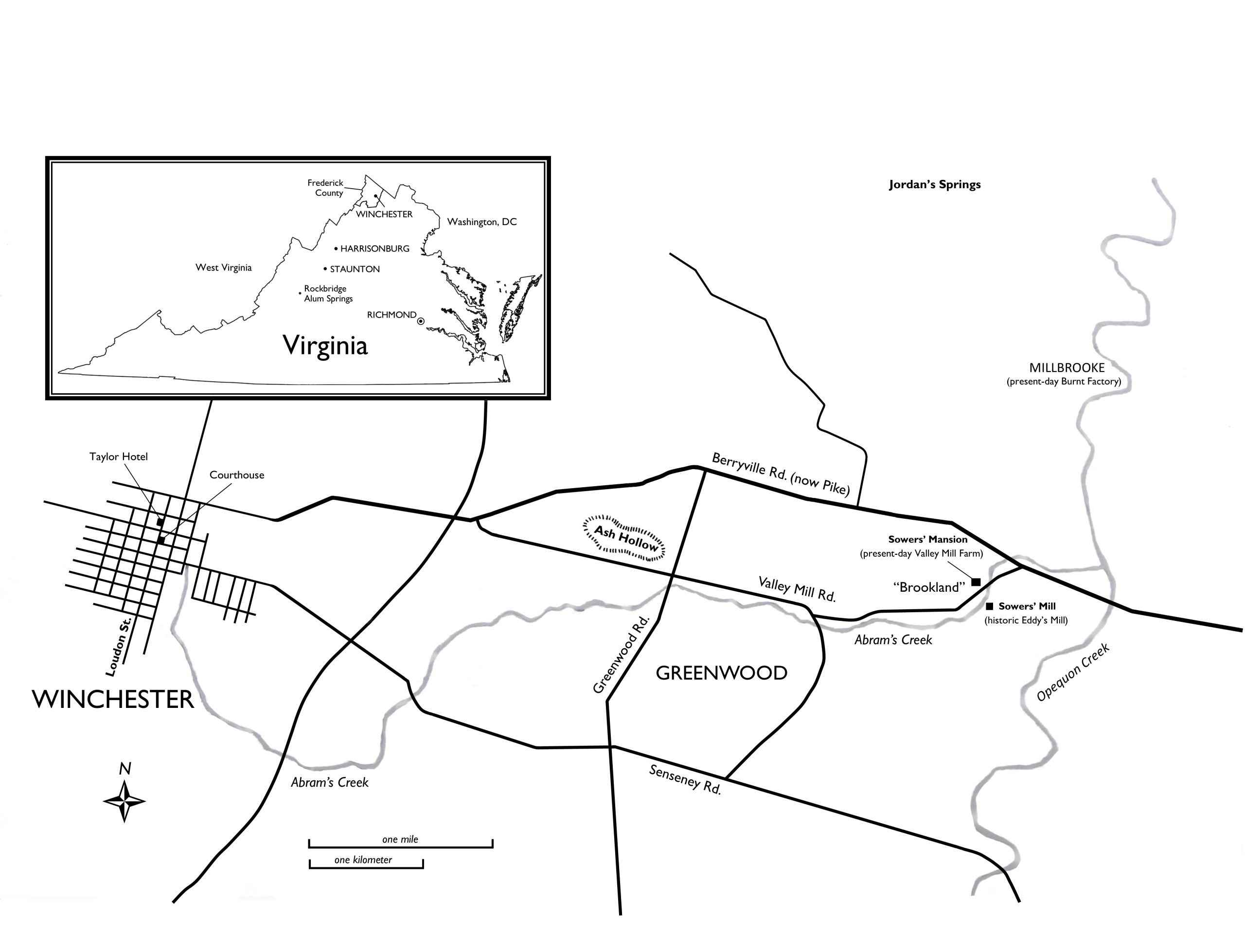Evan Sizemore
The novel’s Brookland estate is situated in the geographically accurate regions surrounding Winchester, Virginia. Newman keeps the geography of the novel closely aligned to the towns, cities, and regions he lived in. Clark, Frederick, and Jefferson (West Virginia) counties are named, as are the towns of Berryville, Greenwood, and Millbrooke (the present-day neighborhood of Burnt Factory).

Newman’s detailed description of the Sowers mill aligns with a historically significant mill several miles outside of Winchester, now the Valley Mill Farm historical site in Winchester, also known as Eddy’s Mill and as the William Helm House.[1] Locations near this mill, such as Ash Hollow, Abram’s Creek (now Abrams Creek), Opequon Creek, and Berryville Pike, are central parts of the novel’s landscape.
Although there is no conclusive evidence that Newman lived on this property (Newman’s actual location in his earlier years is listed on the 1860 census as “Back Creek Valley,” near Gore, Virginia), his precise descriptions of the landscape surrounding this mill suggest a close familiarity with the area. Though this is likely the mill that Newman describes, the other locations he uses in the novel, including a granary and corn house, have not been identified as part of the property. Newman incorporates several historical locations in Winchester, including the Taylor Hotel, the courthouse, and a residence on Loudon Street (now Loudoun Street), the last likely fictional. He also mentions roads between these two important locations, including Berryville Pike and Senseney Road.
As the novel reaches its conclusion, Virginia is portrayed in an almost entirely negative light and is abandoned for New England, which is portrayed as freer and more just. The novel’s entire cast of characters decides to move to Boston together, including the free and enslaved Black people, the latter of whom are emancipated immediately upon arrival in the region. The narrator even notes that young George was “living in anticipation of seeing his parents soon, for they had moved to Boston some considerable time before the opening of our story—and by the laws of the State of Virginia they could not come back to Winchester to live anymore” (212). Geographically, the South is portrayed as a place of crime, evil, and lost family and friends, while the North is portrayed as a place of freedom, wealth, found family, and happily-ever-after romance.

- Virginia Department of Historic Resources’ National Register of Historic Places No. 034-0108: https://www.dhr.virginia.gov/historic-registers/034-0108/. ↵

